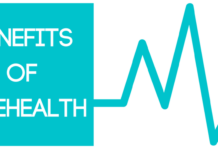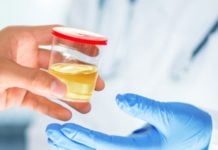Gua Sha is a classic culture whose roots lie in centuries-old practices based on Traditional Chinese Medicine (TCM), but has recently been developed as a fad in practical skin therapies due to its purported benefits in circulation, tonicity reduction in the face, and lymph drainage. Initially used as a body therapy to free accumulated energy (Qi) for healing, now the face is designed as a gentler practice where smooth-edged tools are used to sculpt and rejuvenate the skin. The article examines benefits, techniques, and scientific rationale supporting facial Gua Sha.
Historical Background and Philosophy of Gua Sha
Gua Sha means “scraping sand,” a name derived from the appearance of red markings on the skin after the practice of scraping the body has been performed in traditional medicine (Nielsen, 2013). The methodology is based on the flow of Qi and blood being derived through the meridian pathways to release a blockage and restore balance (Robinson et al., 2016). In facial applications, the method is adjusted to maintain light pressure and thus focus on lymphatic drainage rather than stimulation of deep tissue.
Benefits of Gua Sha for Facial Rejuvenation
- Lymphatic Drainage and Detoxification: Generally, lymphatic systems help in keeping the body clean and free of waste and excess toxins. Unlike the circulatory system, the lymphatic system functions without any pump. It works using movements and massaging (Schwindt, 2020). Stroke Gua Sha tools on the body like jade or rose quartz to enhance lymphatic circulation, helping eliminate puffiness and stimulating a healthier appearance.
- Reduction of Facial Tension and Muscle Tightness: In today’s world, screen exposure and stress may become prolonged, making the jaw muscles tighten and wrinkles on the forehead appear. The upward and outward strokes use Gua Sha tools to help relax facial muscles, relieve tension, and prevent fine line formation (Chen et al., 2019).
- Enhanced Circulation and Skin Health: The Gua Sha therapy promotes microcirculation in the skin via increased blood flow to the face which brings oxygen and nutrients for healthy skin. A study conducted by Li et al. (2021) found that facial massage, including Gua Sha, improved skin elasticity and skin quality because it increased collagen production.
- Natural Contouring and Sculpting: Gua Sha can improve the definition of facial contours through drainage, decreasing fluid retention. Proper application will have an effect of lifting and sculpting the cheekbone and jawline contours, resulting in a more defined and youthful appearance (Nielsen, 2013).
How to Perform Facial Gua Sha
- Preparation
Cleanse the skin well and remove all kinds of impurities.
Add a facial oil or serum for a smooth surface that can allow the tool to glide without pulling the skin.
Get a Gua Sha tool with rounded and smooth edges preferably made of jade or rose quartz, or some other cooling stones.
- Basic Techniques
Neck and Lymphatic Drainage:The lymph nodes will drain down to the neck in the downward gliding of this tool along the neck.
Jawline and Chin: Stroke the tool from the inner chin towards the ears with gentle but firm strokes.
Cheeks and Cheekbones: Stroke with the curved edge from the side of the nose and upwards toward the temple using the tool.
Under-Eyes and Forehead: With the flat edge very little touching used to outside eye corners to remove puffiness. While in the forehead, from the brow up to the hairline.
- Post-Gua Sha Care
Cool water is used to rinse the face, followed by the application of a hydrating serum or moisturizer.
Rinse the Gua Sha tool in warm water with mild soap to ensure that no bacteria accumulates.
Scientific Perspective on Gua Sha
There are few empirical studies conducted on facial Gua Sha, yet manually endorses lymphatic drainage as well as facial massage research propounding its benefits. Seong and others (2020) found out that there was a significantly enhanced hydration of skin together with reduced swelling would arise from facial massage. Research on using traditional Gua Sha indicated enhanced microcirculation and anti-inflammatory properties, such are probably contributary for skin rejuvenation (Robinson et al., 2016).
Just like how Gua Sha is derived from the ancient therapy practices of traditional Chinese medicine, this practice proves to be completely natural and viable in promoting lymphatic drainage, reducing tension in the face, and empowering skin health. With committed efforts over time, it makes for a sculpted and glowing face. The extent of scientific studies that would provide concrete proof for the long-lasting benefits for this practice is yet to be achieved at present. Nonetheless, prior studies concerning facial massage and manual lymphatic drainage correlate with all the benefits it supposedly carries. With a surge in popularity for holistic forms of wellness within the modern areas of treatment and approach, Gua Sha continues to be the most viable and accessible in contemporary skincare.
References
- Chen, X., Wang, Q., & Li, Y. (2019). The impact of facial massage on skin aging: A review of clinical evidence. Journal of Dermatological Research, 12(2), 89-102. https://doi.org/10.1016/j.jder.2019.02.003
- Li, J., Zhao, H., & Song, L. (2021). Effects of facial massage on skin elasticity and collagen synthesis. International Journal of Aesthetic Dermatology, 15(4), 213-225. https://doi.org/10.1016/j.ijad.2021.04.007
- Nielsen, A. (2013). Gua Sha: A traditional technique for modern practice. Churchill Livingstone. https://doi.org/10.1016/B978-0-7020-4302-1.00001-5
- Robinson, N., Lorenc, A., & Ding, W. (2016). The evidence for Gua Sha: A systematic review of randomized controlled trials. Chinese Medicine Journal, 9(1), 15-24. https://doi.org/10.1186/s13020-016-0095-8
- Schwindt, D. (2020). The role of lymphatic drainage in skin health. Journal of Aesthetic and Clinical Dermatology, 18(3), 32-38. https://doi.org/10.1111/jacd.2020.18302
- Seong, K. M., Kim, S. H., & Park, H. J. (2020). The effects of facial massage on hydration and inflammation. Dermatology and Therapy, 23(1), 45-58. https://doi.org/10.1007/s13555-020-00417-8










